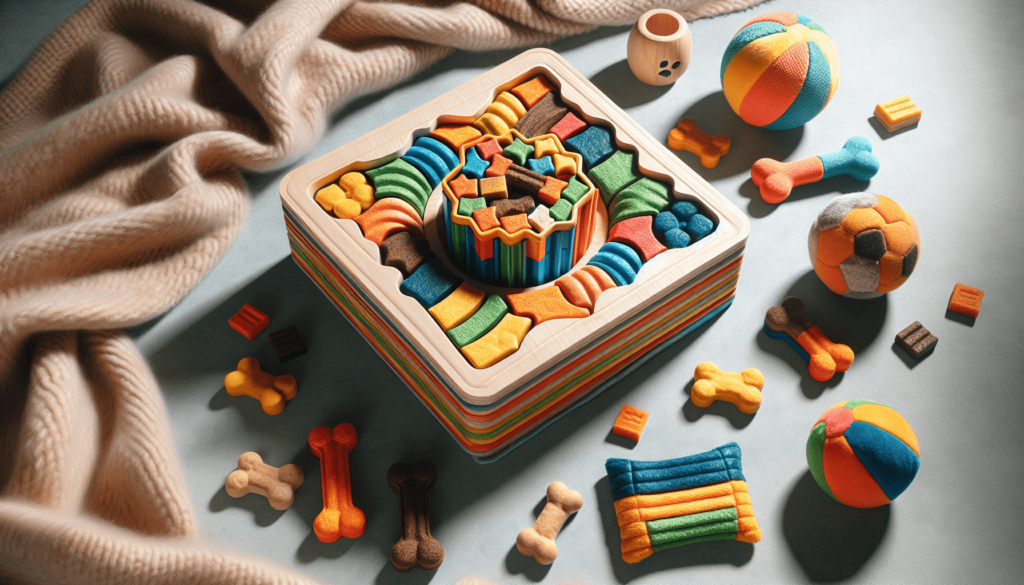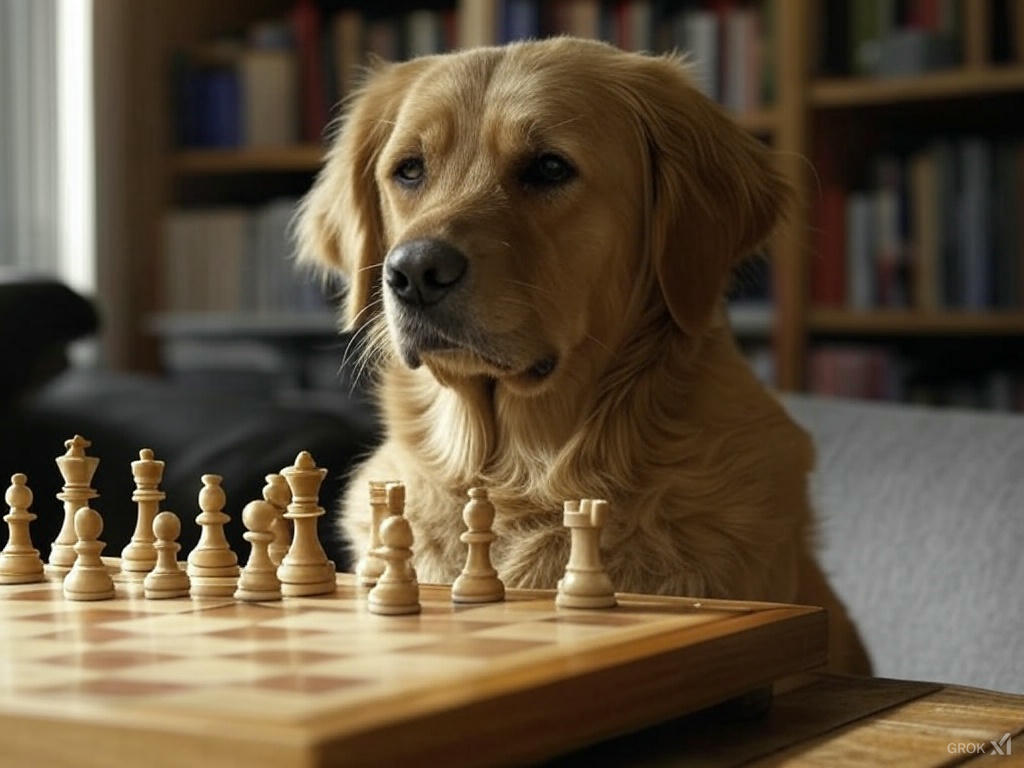Have you ever watched your anxious dog pacing back and forth, and wondered what you can do to help them feel more at ease?
Just like us, dogs can struggle with anxiety, but there are effective ways to engage their minds and lessen their stress.
Let’s explore several enjoyable mental stimulation activities specifically designed for anxious dogs.

Why Mental Stimulation Matters for Anxious Dogs
What is Mental Stimulation?
Mental stimulation involves activities that require a dog to think, problem-solve, or engage their senses. It’s not just about physical exercise; it’s about keeping their mind sharp.
How Does Mental Stimulation Help with Anxiety?
When you provide your anxious dog with mental challenges, it can redirect their focus away from stressors.
This minimizes their anxious behaviors and helps them feel calmer overall. Engaging their minds promotes a sense of accomplishment, which can boost their confidence.
What Are the Signs of Anxiety in Dogs?
Recognizing anxiety in your dog is crucial in tailoring activities to suit their needs.
Common signs include excessive barking, pacing, whining, and destructive behavior. Being aware of these signs can help create a more adaptive environment for your furry friend.
Can Mental Stimulation Have Other Benefits?
Absolutely! Engaging your dog mentally can improve their overall well-being, strengthen your bond, and keep them entertained.
You’ll notice a happier, healthier dog when they have activities that challenge them mentally.
Fun Activities to Stimulate Your Dog’s Mind
What Are Some Interactive Puzzle Toys?
Interactive puzzle toys are excellent for allowing your dog to work for treats. These toys come in various designs, making them suitable for dogs of all sizes and skills.
How Do Puzzle Toys Function?
Puzzle toys often require dogs to slide, push, or lift pieces to discover hidden treats.
You can make it easier for them at first by removing unreachable treats before adding challenges.
Where Can You Find Quality Puzzle Toys?
Pet stores and online retailers offer a wide range of options.
Look for brands that focus on stimulating toys and check reviews to ensure you’re picking one that suits your dog’s size and anxiety level.
Are There Homemade Puzzle Games You Can Create?
You don’t need to buy fancy toys; you can create engaging puzzle games at home!
How Can You Use a Muffin Tin for a Puzzle?
Take a muffin tin and place treats in some of the cups, covering them with tennis balls or pieces of paper.
Your dog will have to figure out how to remove the balls to get their treats.
Can You Make a Snuffle Mat?
Snuffle mats are easy to make using a rubber mat and strips of fleece fabric.
Tie the fleece strips on the mat and scatter treats within the fabric. Your dog will love nosing around to find their snack.
What About Scent Work Activities?
Dogs naturally love to use their noses, and scent work can be deeply satisfying for them.
How Can You Start Simple Scent Games?
Start by hiding treats around your home and encouraging your dog to find them. Use a cue like “Find it!” to give them direction.
Can You Take it Up a Notch?
After your dog masters finding treats indoors, consider hiding them in your yard or taking them on a scent trail in your neighborhood.
Can You Incorporate Basic Obedience Training?
Training can be a fantastic way for anxious dogs to engage their minds while simultaneously improving their behavior.
What Commands Should You Focus On?
Basic commands like sit, stay, and come are essential and beneficial. You can incorporate fun twists, like teaching your dog to spin or play fetch, which can keep them engaged.
Are There Positive Reinforcement Techniques You Can Use?
Always use rewards such as treats or praise when your dog accomplishes a command. This method builds trust and makes learning enjoyable for them.
Implementation of Mental Stimulation Activities in Daily Life
How Can You Develop a Routine?
Creating a structured routine helps your dog know what to expect, which can ease their anxiety.
How Often Should You Include Mental Activities?
Aim for at least 15-30 minutes of mental stimulation every day. Combining this with physical exercise can lead to a balanced routine.
What If Your Dog Isn’t Interested at First?
Be patient. You might need to try a few different activities before finding what captivates your dog’s attention.
Can You Involve the Whole Family?
Encouraging the entire family to participate in these activities can benefit your dog immensely and strengthen family bonds.
How Can Family Members Contribute?
Assign different family members to take charge of specific activities. For instance, one person could be in charge of scent games, while another organizes puzzle toys.
Can Kids Play a Role in Mental Stimulation?
Certainly! With supervision, kids can engage in simple training games or toss fetch toys. It’s a fun way to create shared experiences.
What About Socialization with Other Dogs?
Balancing mental stimulation with social interaction can also alleviate anxiety.
How Can You Safely Socialize Your Dog?
Consider enrolling in puppy classes or organized dog playdates where controlled interactions occur. This can enhance their comfort level around other dogs.
Should You Opt for One-on-One Playdates?
Sometimes, a one-on-one playdate with a calm, friendly dog can be less overwhelming for your anxious pup.
Safety Precautions and Considerations
What Should You Keep in Mind when Choosing Activities?
Not all activities are suitable for every dog, especially if they have specific anxieties or fears.
How Can You Identify Anxieties Triggered by Certain Activities?
If your dog shows signs of distress, such as hiding or refusing to engage, reconsider the activity. It’s essential to choose games that cater to their comfort.
Should You Monitor Their Response?
Always watch your dog’s body language during activities. If they seem uncomfortable, take a break or switch to something else.
Can You Consult a Professional if Needed?
If your dog’s anxiety is severe, consider seeking the advice of a professional dog trainer or a veterinarian.
How Can They Help?
Trainers can offer tailored behavioral plans, while veterinarians can discuss anxiety medications or supplements, providing more support for your dog.
Conclusion: Taking Action to Support Your Anxious Dog
Engaging your anxious dog through mental stimulation activities can help alleviate their stress and pave the way for a confident, happy pup. Remember to start small, be patient, and always prioritize their comfort level.
Incorporating puzzle toys, scent work, obedience training, and interactive family activities will keep their minds buzzing and enrich your bond together.
So, when will you introduce a new mental challenge to your furry friend?
Taking that first step can lead to remarkable changes in your dog’s anxiety levels. Embrace the adventure, and watch them thrive!
Frequently Asked Questions
- How do I know if my dog is anxious? Signs include excessive barking, destruction of furniture, hiding, or panting.
- What are some engaging activities for anxious dogs? Puzzle toys, scent work, basic training, and interactive play are excellent options.
- Can all dogs benefit from mental stimulation? Yes, dogs of all breeds and ages can benefit greatly from engaging their minds.
- How long should I spend on mental activities? Spend about 15-30 minutes daily on mental stimulation.
- What if my dog refuses to engage? Try different activities or reduce the challenge; persistence is key.
- Can socialization help with my dog’s anxiety? Yes, positive social interactions can improve your dog’s comfort and confidence.
- Should I consult a vet for my dog’s anxiety? If your dog’s anxiety persists, it’s wise to seek a veterinarian’s opinion.
- Are there homemade puzzles I can make for my dog? Yes! Muffin tin games and snuffle mats are great, easy-to-make puzzles.
- What are some signs that my dog is enjoying an activity? Signs of enjoyment include tail wagging, playful behavior, and eagerness to participate.
- How can I create a safe space for my anxious dog at home? Provide a designated spot with their favorite toys, blankets, and safe items to help ease their mind.
Taking thoughtful steps to engage your anxious dog in mental activities can lead to a lasting, positive change.
Your attention and efforts can make all the difference for your furry companion!
